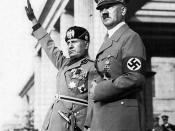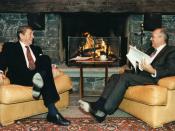Question:
Analyze the American way of waging war compared to the Japanese and German conduct of war in World War Two and how that experience influenced the United States in the conduct of limited warfare in the post-World War Two era. Address the societal aspects of the United States as they influenced its way of war. Be specific in your answer by discussing technology, tactics, formations, organizations, weaponry, training, doctrine and leadership. Use specific examples to support your answer.
Answer:
Even before World War II came to a close, tensions were already close to peaking between the Western European and American Allies and their not-so-trusting ally of the Soviet Union. However, the types of warfare that concluded the war impacted the world in such a way that the 'traditional' methods and strategies would no longer maintain their credibility--and at the forefront of this radical change was the United States.
In the beginning of the war, Hitler's Germany concentrated their war strategm on utilizing their superior panzerlehr and Luftwaffe combined with the fanaticism of their infantry to execute their Führer's wildest demands.
Although Hitler later became fanatic about the developments of 'War Winning' super-weapons, such as the V2 rockets, the Panther class panzers (and later the Dr. Porsche proposal to build a 1,000 ton superheavy tank that would be three times the size of the Tigers), and the introduction of jagdpanzer "Ferdinand" that boasted a 100-mm L 70 gun, he never really pushed for innovative armaments that went outside the box of the basic betterment of pre-existing war machines. In the end, Hitler's concentration of V1 and V2 rocket attacks on Britain brought the world's attention to the power of the rocket--which would later become the basis for the succession in distance of the missiles that gave birth to the ICBMs.


